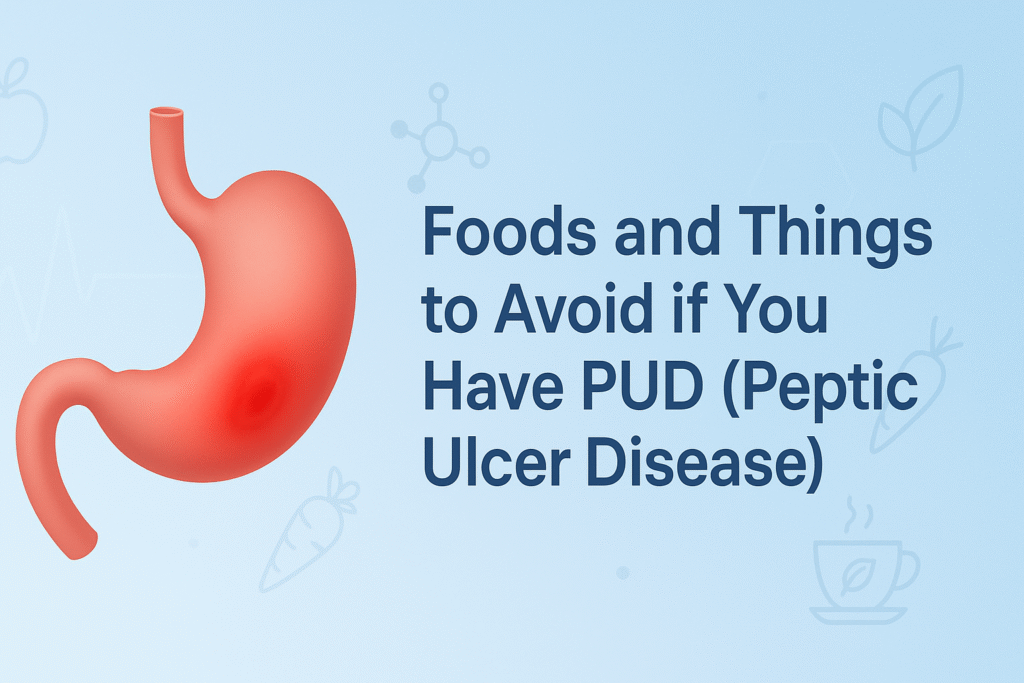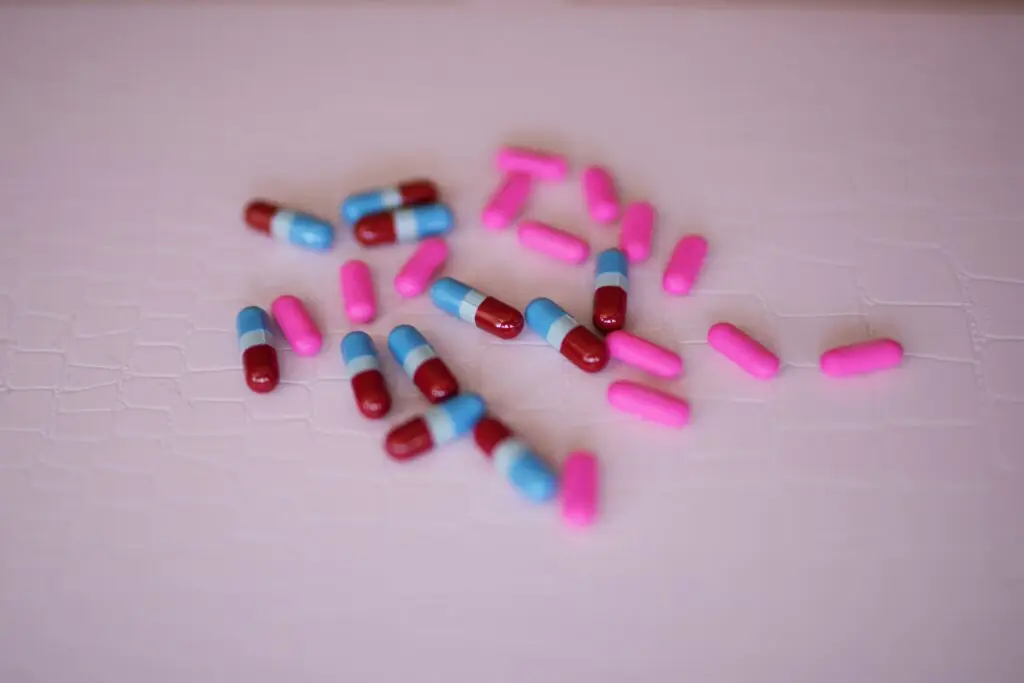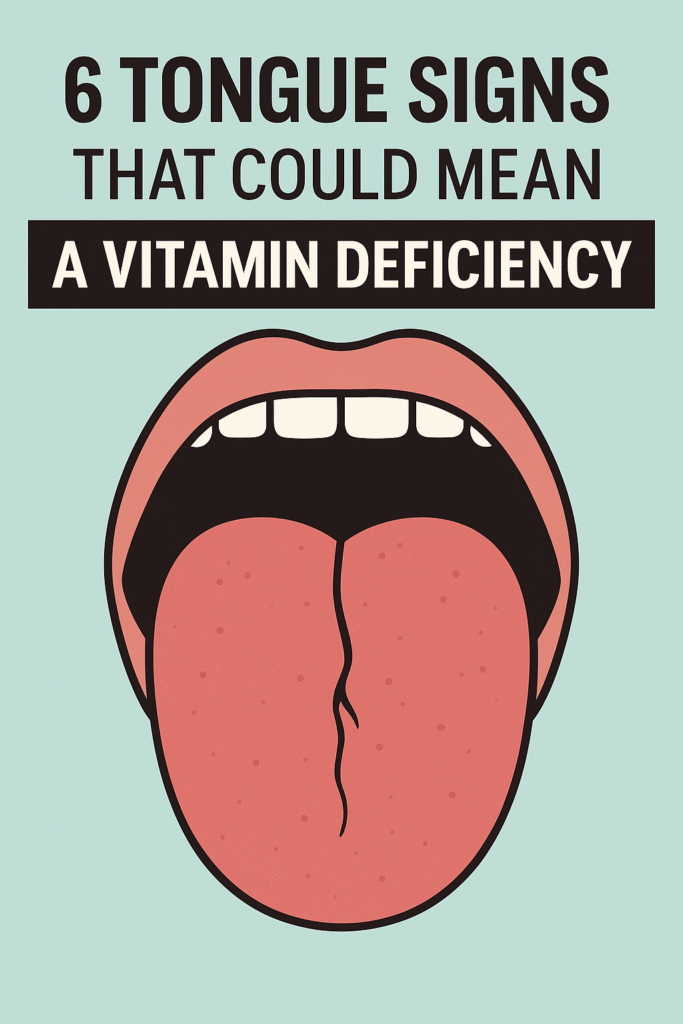
⚠️ Affiliate Disclaimer: This post may contain affiliate links, which means I may earn a small commission — at no extra cost to you — if you make a purchase through one of these links. I only recommend products or services I genuinely trust and believe can provide value. Thank you for supporting My Medical Muse!
10 Worst Foods to Avoid if You Have Peptic Ulcer Disease
Peptic Ulcer Disease (PUD) is one of those conditions that can turn simple meals into painful experiences. Whether it’s a burning sensation in your upper abdomen after eating or discomfort that worsens on an empty stomach, ulcers can significantly affect your quality of life, but the good news? Diet plays a major role in managing ulcer symptoms and promoting healing. By understanding which foods to avoid and which to embrace, you can soothe your stomach and reduce flare-ups naturally.
In this comprehensive guide, we’ll cover:
- What peptic ulcer disease is and what causes it
- How food influences ulcer healing or irritation
- The worst foods and habits to avoid
- The best dietary and lifestyle strategies for lasting relief
What Is Peptic Ulcer Disease (PUD)?
Peptic Ulcer Disease (PUD) refers to painful sores that develop in the lining of your stomach, upper small intestine (duodenum), or occasionally the esophagus. These ulcers occur when the protective mucous barrier that shields your digestive tract from stomach acid becomes damaged.
There are two main types of peptic ulcers:
- Gastric ulcers: located in the stomach.
- Duodenal ulcers: located in the first part of the small intestine.
Common Causes
- Helicobacter pylori (H. pylori) infection: A spiral-shaped bacterium that weakens the stomach’s protective lining, allowing acid to penetrate deeper and form sores.
- Chronic NSAID use: Frequent use of painkillers like ibuprofen, naproxen, or aspirin irritates and inflames the stomach lining.
- Excess stomach acid: Can be related to stress, certain foods, or genetic factors that overstimulate acid production.
- Smoking and alcohol: These delay healing, reduce blood flow to the stomach lining, and worsen irritation.
How Diet Affects Peptic Ulcer Disease
Your diet can’t cause ulcers directly (except indirectly through chronic irritants like alcohol or NSAIDs), but it can absolutely make them worse or better.
1. Foods That Aggravate Ulcers
Certain foods and drinks increase acid production, irritate the stomach lining, or slow the healing process. These are the ones to avoid or limit.
2. Foods That Help Heal
On the other hand, some foods are rich in antioxidants, probiotics, and anti-inflammatory compounds that protect your digestive tract and may even inhibit H. pylori bacteria.
The key is to strike a balance, eat foods that support healing while cutting back on those that trigger discomfort.
Foods and Drinks to Avoid if You Have PUD
Let’s start with the common culprits, foods and habits that can worsen your symptoms or delay recovery.
1. Spicy Foods
For many ulcer patients, spicy foods like chili peppers, hot sauces, or heavily seasoned meals can quickly turn a pleasant dish into a painful experience. That familiar burning sensation after eating spicy food isn’t your imagination, it’s your ulcer reacting to the chemical compounds in the spice. The main irritant is capsaicin, the compound responsible for the “heat” in chili peppers. While capsaicin has some digestive benefits for healthy individuals such as boosting metabolism and improving circulation, it can worsen inflammation and intensify pain in people with PUD.
When the stomach lining is already raw or ulcerated, capsaicin acts like salt on a wound, it triggers more acid production and irritates sensitive tissues, resulting in burning, cramping, or even nausea.
Examples of Foods to Limit or Avoid
- Chili powder or crushed red pepper flakes
- Hot sauces (like peri-peri, Tabasco, or sriracha)
- Curry blends or spicy stews
- Jalapeños, habaneros, or scotch bonnet peppers
- Pepper-heavy soups or barbecues
Even small quantities of these can worsen pain for some individuals, especially if consumed on an empty stomach.
What Happens When You Eat Spicy Food with an Ulcer
- Increased acid secretion: Your stomach produces more acid to digest spicy meals, which can aggravate ulcers.
- Delayed gastric emptying: Food stays longer in the stomach, prolonging irritation.
- Burning and bloating: Capsaicin stimulates nerve endings, causing a burning sensation in the upper abdomen.
- Heartburn and reflux: Spices can relax the lower esophageal sphincter, allowing acid to rise up.
Gentle Flavor Alternatives
Avoiding spice doesn’t mean giving up flavor. Try these soothing, anti-inflammatory substitutes:
- Turmeric: Contains curcumin, which supports healing and reduces inflammation.
- Ginger: Calms nausea and improves digestion without irritating the lining.
- Cinnamon: Mildly sweet and can help combat H. pylori.
- Basil, parsley, or thyme: Add freshness and aroma without acidity.
- Garlic (in small amounts): Has natural antibacterial properties, though introduce gradually if sensitive.
If you’re transitioning from a spicy diet, taper down gradually rather than cutting it off cold-turkey. You can blend chili with cooling ingredients like coconut milk or yogurt to reduce its effect on your stomach. Spicy foods don’t cause ulcers, but they can inflame and prolong existing ones. If you notice discomfort after eating spicy meals, it’s best to avoid them until your stomach lining has healed completely.
2. Fried and Fatty Foods
Fried and greasy foods are some of the biggest enemies of a sensitive stomach, especially for those with Peptic Ulcer Disease (PUD). While they may be tempting, these foods delay stomach emptying, increase acid exposure, and often lead to uncomfortable symptoms like bloating, fullness, and reflux. When you eat high-fat or fried foods, your stomach takes longer to digest them. This extended digestion time means that acid stays in your stomach longer, exposing the ulcerated lining to more irritation. In addition, fatty foods can weaken the valve between your stomach and esophagus (the lower esophageal sphincter), which increases the likelihood of acid reflux, a major discomfort trigger for ulcer patients.
Examples:
- Deep-fried foods like fries, doughnuts, fried chicken, and plantain chips
- Creamy, buttery sauces and gravies
- Fatty meats such as bacon, sausages, and pork belly
- Full-fat dairy, cheese-heavy dishes, and butter-laden pastries
These foods don’t just irritate ulcers, they also increase inflammation throughout the digestive system.
Better Options
Switch to light, low-fat cooking methods:
- Grilled or baked proteins (chicken breast, fish, tofu)
- Steamed or boiled vegetables
- Olive oil or avocado oil in moderation
These alternatives are easier to digest and less likely to cause post-meal pain or reflux.
3. Caffeinated Beverages
Caffeine and ulcers are a troublesome combination. Even small amounts of caffeine can trigger acid production and worsen ulcer pain. Caffeine stimulates your central nervous system and your stomach acid glands along with it. This extra acid can irritate the stomach’s delicate lining, worsen inflammation and intensify discomfort, particularly in the upper abdomen.
Even decaffeinated versions of coffee and tea still contain small traces of caffeine and acidic compounds that may trigger irritation in sensitive individuals.
Examples
- Coffee (including decaf)
- Black or green tea
- Energy drinks and pre-workout beverages
- Cola and other caffeinated sodas
Alternative
Choose herbal teas that soothe the stomach instead of stimulating it:
- Chamomile tea: Calms inflammation and reduces acidity.
- Ginger tea: Aids digestion and reduces nausea.
- Licorice root (DGL) tea: Protects the stomach lining.
These herbal substitutes provide warmth and flavor without the harsh side effects of caffeine.
4. Alcohol
If you have an ulcer, alcohol is one of the most harmful things you can consume. Even in small amounts, it can set back your healing process. Alcohol acts as an irritant to the stomach and intestinal lining, eroding the protective mucous barrier and allowing acid to penetrate deeper into tissues. Over time, this can make existing ulcers worse or even cause new ones.
It also increases acid production, delays healing and can interfere with medications like proton pump inhibitors (PPIs) or antibiotics used to treat H. pylori.
Effects of Alcohol on Ulcers
- Increases acid production
- Causes inflammation of the stomach lining (gastritis)
- Exacerbates bleeding risk if ulcers are open
- Interferes with ulcer medications
Avoid alcohol completely during ulcer treatment and recovery. Even moderate intake, like “just one glass of wine” can undo healing progress. Instead, hydrate with water, coconut water, or mild fruit infusions.
5. Chocolate
Chocolate may feel comforting, but for those with PUD, it’s a potential trigger food. Chocolate contains caffeine and theobromine, two stimulants that relax the lower esophageal sphincter, the valve that keeps stomach acid from rising. When that valve loosens, acid reflux becomes more frequent, leading to burning sensations and worsened ulcer pain.
In addition, chocolate is high in fat and sugar, both of which delay stomach emptying and can trigger inflammation.
If You’re Craving Something Sweet
Try natural, ulcer-friendly sweets such as:
- Bananas: Contain natural antacids and are soothing.
- Papayas: Contain digestive enzymes (papain) that promote healing.
- Honey: Has antibacterial properties that may help combat H. pylori.
These alternatives satisfy your sweet tooth while helping rather than harming your stomach.
6. Citrus Fruits and Juices
Citrus fruits are packed with vitamin C, great for immunity, but problematic for ulcers. Their high acidity can sting raw stomach tissue, causing burning pain, cramping, or reflux. When ulcers are still healing, even a glass of orange juice can irritate the sensitive lining and delay recovery.
Examples
- Oranges and orange juice
- Lemons and limes
- Grapefruits and tangerines
Better Alternatives
Opt for low-acid fruits that are gentler on your digestive tract:
- Melons (watermelon, cantaloupe)
- Bananas and pears
- Apples (peeled, to reduce fiber roughness)
These fruits are rich in vitamins, mild in flavor, and soothing for the stomach.
7. Tomato-Based Foods
Tomatoes, though healthy are naturally acidic and that acidity can be harsh on ulcerated tissue. Tomatoes and tomato-based products increase stomach acidity, triggering burning sensations, reflux, and discomfort. Their combination of natural acids (like citric and malic acid) and seeds can further irritate the lining of your digestive tract.
Examples
- Tomato sauce or paste
- Pizza and spaghetti sauce
- Ketchup and salsa
- Tomato-based soups and stews
Alternative
Instead of tomato sauces, try:
- Creamy or yogurt-based sauces
- Herb and olive oil dressings
- Pesto made with basil, garlic, and olive oil
These options are flavorful and kind to your stomach lining.
8. Carbonated Drinks
That fizzy sensation may feel refreshing, but carbonated drinks are a hidden trigger for ulcer pain and bloating. Carbonation releases gas, which expands your stomach and increases internal pressure. This can push acid upward, worsening reflux and irritation. Moreover, many carbonated drinks especially colas contain caffeine and acidic flavorings that further damage the stomach lining.
Examples
- Cola, Fanta, Sprite, and other sodas
- Sparkling water
- Flavored fizzy beverages and energy drinks
Alternative
- Still water: Gentle and hydrating
- Coconut water: Naturally alkaline and soothing
- Diluted non-citrus fruit juices: Refreshing and easy to digest
9. Processed and Preserved Foods
Convenience foods are easy to grab but harsh on the digestive system. Many contain additives that can irritate your stomach and slow down healing. Processed foods often contain preservatives, nitrates, and artificial flavorings that stress the stomach’s mucous layer. These chemicals can exacerbate inflammation and make it harder for ulcers to heal. Additionally, they’re usually high in salt and unhealthy fats, both linked to higher ulcer severity.
Examples
- Canned or processed meats (sausages, hot dogs, spam)
- Instant noodles and packaged soups
- Salty snacks and chips
- Refined pastries and fast foods
Better Choices
Stick to whole, natural foods:
- Freshly prepared home meals
- Whole grains like brown rice and oats
- Steamed vegetables and lean proteins
Your body (and stomach) will thank you for it.
10. Excess Salt
While your body needs some sodium, too much salt can actually worsen ulcers and make H. pylori infections more aggressive. Excessive salt intake damages the stomach’s protective lining and enhances H. pylori’s ability to colonize the stomach wall. Over time, this combination can increase inflammation and delay ulcer healing.
Examples
- Salted snacks (chips, crackers, pretzels)
- Pickled or brined foods
- Canned soups and sauces
- Processed meats and cheeses
Instead of relying on salt for flavor, try herbal seasonings like:
- Parsley
- Thyme
- Rosemary
- Oregano
These not only enhance taste but also provide antioxidant benefits that support gut healing.
Foods That Promote Healing in Peptic Ulcer Disease
Now that you know what to avoid, let’s focus on foods that help your stomach heal naturally.
1. Probiotic-Rich Foods
Probiotics help balance gut bacteria and suppress H. pylori growth.
- Examples: Yogurt with live cultures, kefir, miso and tempeh, sauerkraut and kimchi (in moderation)
They also enhance nutrient absorption and immune function.
2. Fiber-Rich Foods:
A high-fiber diet reduces acid concentration and speeds healing.
- Examples: Oats, barley, brown rice, apples, pears, carrots, leafy greens, beans, lentils.
Soluble fiber (like that in oats and apples) is gentler on the stomach than insoluble fiber.
3. Lean Protein Sources
Protein aids in tissue repair and recovery.
- Examples: Skinless chicken or turkey, fish (especially salmon, mackerel for omega-3s), eggs, tofu and legumes.
Cooking method: Always bake, grill, or steam, avoid frying.
4. Non-Acidic Fruits
These provide antioxidants and vitamins without the sting.
- Examples: Bananas (soothing and rich in mucilage), melons, papaya (contains papain, which aids digestion), apples (without the skin)
5. Vegetables That Soothe
Non-gassy, lightly cooked veggies are best.
- Examples:
- Cabbage (contains compounds that promote mucosal healing), broccoli (contains sulforaphane that fights H. pylori), sweet potatoes, carrots and zucchini
- Cabbage (contains compounds that promote mucosal healing), broccoli (contains sulforaphane that fights H. pylori), sweet potatoes, carrots and zucchini
Cooking tip: Steam or boil, raw veggies can cause gas and irritation.
6. Healthy Fats
Good fats reduce inflammation and support healing.
- Examples:
- Olive oil, flaxseed oil, avocados, nuts (in moderation)
- Olive oil, flaxseed oil, avocados, nuts (in moderation)
Avoid trans fats, they promote inflammation and delay healing.
7. Herbal Remedies and Teas
Certain herbs can calm inflammation and promote ulcer healing.
- Examples:
- Chamomile tea: Calms the stomach lining.
- Licorice root (DGL): Protects the mucosal barrier.
- Ginger: Aids digestion and fights nausea.
- Turmeric: Has anti-inflammatory curcumin compounds.
- Chamomile tea: Calms the stomach lining.
Always consult your doctor before taking herbal supplements, as some may interact with medications.
Meal Timing and Eating Habits Matter
Even the healthiest foods can irritate your stomach if eaten improperly. Here’s how to eat smart with PUD.
1. Eat Smaller, More Frequent Meals
Large meals overfill your stomach, increasing acid production. Try 5-6 small meals daily instead of 2-3 large ones.
2. Avoid Eating Late at Night
Lying down after eating promotes reflux and discomfort.
Stop eating at least 2-3 hours before bedtime.
3. Chew Food Thoroughly
Proper chewing reduces mechanical irritation and aids digestion.
4. Stay Upright After Meals
Sit up or take a light walk after eating to prevent reflux.
Lifestyle Habits to Avoid
1. Smoking
Nicotine stimulates stomach acid and slows healing. It also increases the risk of ulcer recurrence.
2. Excess Stress
Stress doesn’t cause ulcers directly, but it increases acid output and worsens symptoms.
Practice relaxation: deep breathing, meditation, or light yoga.
3. Overuse of Painkillers (NSAIDs)
Ibuprofen, aspirin, and naproxen can erode the stomach lining. Ask your doctor about safer pain relief alternatives, like acetaminophen.
Hydration Tips
Drink plenty of fluids, but wisely, sip water between meals don’t drink too much during meals, it dilutes stomach enzymes.
- Avoid: Sugary drinks, alcohol, or carbonated sodas.
Sample One-Day Ulcer-Friendly Meal Plan
Meal | Menu | Why It Helps |
Breakfast | Oatmeal with banana and honey; chamomile tea | Gentle fiber and anti-inflammatory compounds |
Mid-morning Snack | Yogurt with live cultures | Probiotic benefits |
Lunch | Grilled chicken, steamed broccoli, and brown rice | Protein and antioxidants for healing |
Afternoon Snack | Apple (peeled) or papaya slices | Enzyme-rich and soothing |
Dinner | Baked fish, mashed sweet potatoes, and spinach | Omega-3s and easy digestion |
Evening (optional) | Warm milk or turmeric tea | Promotes comfort and sleep |
When to See a Doctor
Seek medical advice if you experience:
- Persistent abdominal pain or bloating
- Vomiting blood or black stools
- Sudden weight loss or poor appetite
- Pain that wakes you at night
These may indicate a bleeding or perforated ulcer, a medical emergency.
Key Takeaways
What to Avoid | What to Eat |
Spicy, fried, and fatty foods | Lean proteins and steamed veggies |
Coffee, alcohol, and soda | Herbal teas and water |
Citrus, tomatoes, and chocolate | Bananas, papayas, and oats |
Processed foods, excess salt | Whole grains and probiotic yogurt |
Final Thoughts
Living with Peptic Ulcer Disease doesn’t mean you have to eat bland, boring meals forever. The key lies in balance, moderation, and awareness. Once you identify your triggers and nourish your body with healing foods, your symptoms can dramatically improve. Combine a soothing diet with medical treatment (like antibiotics for H. pylori and acid-lowering medications), and you’ll be well on your way to recovery.
Remember, what you eat can either heal or harm your stomach, choose foods that nurture, not irritate.
👩⚕️ Need Personalized Health Advice?
Get expert guidance tailored to your unique health concerns through MuseCare Consult. Our licensed doctors are here to help you understand your symptoms, medications, and lab results—confidentially and affordably.
👉 Book a MuseCare Consult NowRelated Blog Post You Might Like:
- Ulcerative Colitis vs Crohn’s Disease: 11 Key Differences You Must Know
- 7 Proven Ways to Prevent Pressure Ulcers in Wheelchair-Bound Patients
- 7 Surprising Reasons Why Your Stomach Hurts When You Skip Breakfast
- 10 Surprising Reasons Why Your Tongue Burns or Tingles Randomly
- Why Does My Stomach Hurt After Drinking Cold Water? 7 Powerful Reasons Explained
- Why Do I Keep Getting Canker Sores in My Mouth? 10 Powerful Fixes


